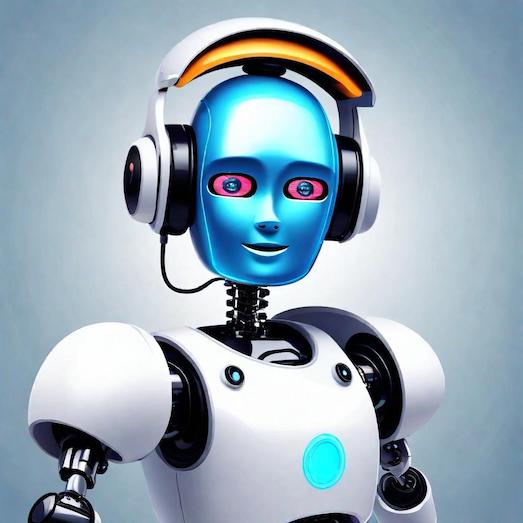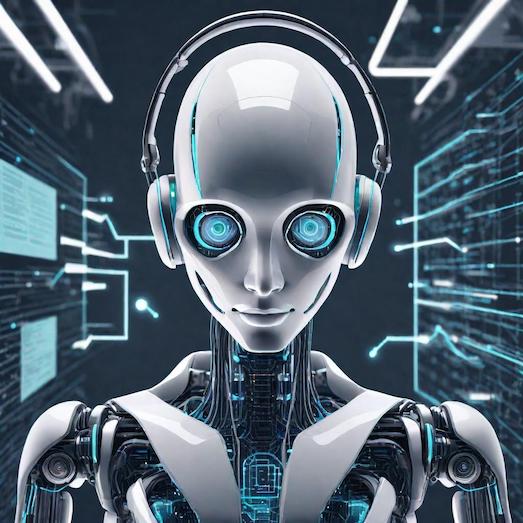Artificial Intelligence (AI) chatbots have revolutionized the way businesses and individuals interact in the digital world. These sophisticated computer programs simulate human conversation, providing instant, automated responses to user queries. Leveraging natural language processing (NLP) and machine learning, AI chatbots are capable of understanding, interpreting, and responding to text or voice inputs in a manner that feels remarkably human.
Importance of AI Chatbots in Today’s Digital Landscape
In today’s fast-paced, digitally-driven world, AI chatbots play a crucial role in enhancing customer experience, streamlining business operations, and facilitating efficient communication. They offer 24/7 customer support, handle a wide range of inquiries simultaneously, and significantly reduce response times. By automating repetitive tasks, chatbots free up human agents to focus on more complex issues, thus improving overall productivity and efficiency. Moreover, they provide personalized interactions, helping businesses build stronger relationships with their customers.
What Are AI Chatbots?
AI chatbots are advanced software applications that use artificial intelligence to simulate human-like conversations with users. They interact through text or voice, providing responses that are designed to feel natural and engaging. Unlike traditional rule-based chatbots, AI chatbots leverage sophisticated technologies like natural language processing (NLP) and machine learning (ML) to understand and respond to a wide range of queries, making them more versatile and effective in various communication scenarios.
Key Components and Technology Behind AI Chatbots
AI chatbots are powered by several key technologies:
- Natural Language Processing (NLP): NLP is the branch of AI that focuses on the interaction between computers and humans through natural language. It enables chatbots to understand, interpret, and generate human language in a way that is both meaningful and useful. NLP involves various processes, such as tokenization, sentiment analysis, entity recognition, and syntactic parsing.
- Machine Learning (ML): ML is a subset of AI that enables chatbots to learn from data and improve their performance over time without being explicitly programmed. Through supervised, unsupervised, or reinforcement learning, chatbots can identify patterns, make predictions, and adapt to new situations. This allows them to handle a wide array of queries and continuously enhance their responses based on user interactions.
- AI Algorithms: AI chatbots use complex algorithms to process and analyze data, identify user intent, and generate appropriate responses. These algorithms include neural networks, which mimic the human brain’s structure and function to process information, and deep learning techniques, which enable the chatbot to understand and respond to complex queries with high accuracy.
- Context Management: Effective AI chatbots can maintain context throughout a conversation, allowing them to provide more relevant and coherent responses. This involves tracking user history, preferences, and previous interactions to offer a personalized experience.
- Integration Capabilities: Modern AI chatbots can integrate with various systems and platforms, such as customer relationship management (CRM) software, e-commerce platforms, and social media channels. This enables them to access and leverage a wide range of data to enhance their functionality and provide seamless interactions across multiple touchpoints.
Types of AI Chatbots
Rule-Based Chatbots
Rule-based chatbots operate on a predefined set of rules and scripts. They follow a decision tree-like structure, where each response is triggered by specific keywords or phrases input by the user. These chatbots are limited to the scenarios they have been explicitly programmed to handle and cannot adapt beyond their predefined scripts.
Use Cases:
- Customer Support: Rule-based chatbots are often used for handling frequently asked questions (FAQs) and simple customer support queries. They can quickly provide answers to common inquiries, such as store hours, return policies, or account information.
- E-commerce: In online shopping platforms, these chatbots can assist users with order tracking, product recommendations based on predefined criteria, and handling simple order-related queries.
- Appointment Scheduling: They are effective for setting up appointments or reservations, guiding users through a step-by-step process to book a service or slot.
Self-Learning Chatbots
Self-learning chatbots, also known as AI-driven chatbots, leverage machine learning and natural language processing (NLP) to understand and respond to user inputs. They continuously learn and improve from interactions, allowing them to handle more complex queries and provide more accurate responses over time.
Use Cases:
- Customer Service: These chatbots can manage a wide range of customer inquiries, offering more personalized and accurate responses by understanding user intent and context. They can also escalate issues to human agents when necessary.
- Virtual Assistants: Personal assistants like Siri, Google Assistant, and Alexa are self-learning chatbots that help users with a variety of tasks, from setting reminders and sending messages to providing weather updates and playing music.
- Healthcare: In the healthcare industry, self-learning chatbots can provide medical information, assist with symptom checking, and offer mental health support through conversational interactions.
Hybrid Chatbots
Hybrid chatbots combine the best of both rule-based and self-learning approaches. They operate with a rule-based framework for handling straightforward queries while leveraging AI and machine learning to manage more complex interactions. This combination allows them to offer both reliability and adaptability.
Use Cases:
- Customer Support: Hybrid chatbots can handle common queries using predefined rules and switch to AI-driven responses for more complex issues. This ensures a seamless user experience while maintaining high accuracy.
- Financial Services: In banking and finance, hybrid chatbots can assist with basic transactions and account information while also providing more nuanced financial advice or fraud detection based on user interactions and data analysis.
- E-commerce and Retail: These chatbots can offer personalized shopping experiences by using rule-based methods for common questions and AI-driven techniques for personalized recommendations and dynamic customer interactions.
Each type of AI chatbot has its strengths and ideal use cases, making them valuable tools across various industries and applications. By understanding the different types of chatbots, businesses can choose the best solution to meet their specific needs and enhance customer engagement.
AI Chatbots in 2024
ChatGPT (https://chat.openai.com/)
Features:
- Natural Language Processing (NLP): Utilizes advanced NLP to understand and generate human-like responses.
- Contextual Understanding: Maintains context within conversations, allowing for more coherent and relevant interactions.
- Customization: Easily customizable for various industries and use cases.
- Integration: Can be integrated with various platforms and applications via APIs.
Pros:
- Highly Conversational: Offers human-like interactions, making it ideal for customer service and engagement.
- Versatile: Suitable for a wide range of applications, from customer support to creative writing.
- Regular Updates: Continuously improved with regular updates and enhancements.
Cons:
- Cost: Can be expensive for small businesses due to usage-based pricing.
- Resource Intensive: Requires significant computational resources, which can be a limitation for some users.
IBM Watson Assistant (https://www.ibm.com/products/watsonx-assistant)
Features:
- Robust NLP: Advanced NLP capabilities for understanding and responding to complex queries.
- Machine Learning: Continuously learns from interactions to improve accuracy and relevance.
- Multilingual Support: Supports multiple languages, making it suitable for global applications.
- Integration: Easily integrates with various CRM systems, social media platforms, and other enterprise tools.
Pros:
- Enterprise-Grade: Designed for enterprise use with high scalability and reliability.
- Security: Strong focus on data security and privacy, adhering to industry standards.
- Customization: Highly customizable to meet specific business needs.
Cons:
- Complex Setup: Requires technical expertise for setup and customization.
- Cost: Higher cost compared to some other chatbot solutions, particularly for small businesses.
Google Dialogflow (https://cloud.google.com/dialogflow)
Features:
- NLP and ML: Leverages Google’s powerful NLP and machine learning capabilities for accurate and efficient interactions.
- Easy Integration: Seamlessly integrates with Google Cloud services and other platforms.
- Voice and Text Interactions: Supports both voice and text-based interactions.
- Agent Management: Provides tools for managing and training virtual agents.
Pros:
- User-Friendly: Intuitive interface and easy-to-use tools for building and managing chatbots.
- Scalability: Highly scalable, suitable for both small and large-scale applications.
- Strong Community: Backed by a large developer community and extensive documentation.
Cons:
- Dependency on Google Ecosystem: Best suited for users heavily invested in the Google ecosystem.
- Learning Curve: Some users may find the initial learning curve steep, especially for advanced features.
Microsoft Bot Framework (https://www.botframework.com/)
Features:
- Comprehensive SDK: Provides a robust SDK for building and deploying chatbots across various channels.
- AI and ML Integration: Integrates with Microsoft’s AI and machine learning services for enhanced capabilities.
- Omnichannel Support: Supports multiple channels, including web, mobile, and messaging platforms.
- Azure Integration: Seamless integration with Azure services for scalability and reliability.
Pros:
- Flexibility: Highly flexible and customizable to meet diverse business requirements.
- Enterprise Support: Offers strong support for enterprise applications with extensive resources and documentation.
- Security: Focuses on enterprise-grade security and compliance.
Cons:
- Technical Expertise Required: Requires significant technical knowledge for setup and customization.
- Cost: Can be cost-prohibitive for smaller businesses or startups.
Amazon Lex (https://aws.amazon.com/lex/)
Features:
- Voice and Text: Supports both voice and text interactions, leveraging Amazon’s Alexa technology.
- NLP: Advanced NLP for understanding and generating natural language responses.
- Seamless Integration: Integrates with AWS services and other third-party applications.
- Scalable: Built on AWS infrastructure, offering high scalability and reliability.
Pros:
- Alexa Technology: Benefits from the advanced capabilities of Amazon Alexa.
- AWS Ecosystem: Easily integrates with other AWS services, providing a comprehensive solution for businesses.
- Customization: Highly customizable to meet specific business needs.
Cons:
- AWS Dependency: Best suited for users already utilizing AWS services.
- Cost: Usage-based pricing can become expensive for high-volume applications.
Rasa (https://rasa.com/)
Features:
- Open Source: Open-source framework for building custom AI chatbots.
- NLP and ML: Advanced NLP and machine learning capabilities for accurate and efficient interactions.
- Customization: Highly customizable and flexible, allowing for tailored solutions.
- Community Support: Strong community support and extensive documentation.
Pros:
- Cost-Effective: Open-source nature makes it a cost-effective solution for many businesses.
- Flexibility: Highly flexible and can be tailored to specific use cases and requirements.
- Active Community: Active developer community and regular updates.
Cons:
- Technical Expertise Required: Requires significant technical knowledge for setup and customization.
- Complex Setup: Initial setup and configuration can be complex for non-technical users.
Each of these top AI chatbots in 2024 offers unique features and capabilities, making them suitable for different use cases and industries. By understanding their strengths and limitations, businesses can select the best chatbot solution to meet their specific needs and enhance their digital interactions.




Pingback: Chat with Google AI: Tips for Better Conversations -
Pingback: 10 Secrets to Making Money from AI - AI Gear Guru